
The top 25 sights in the USA
16. Fisherman’s Wharf
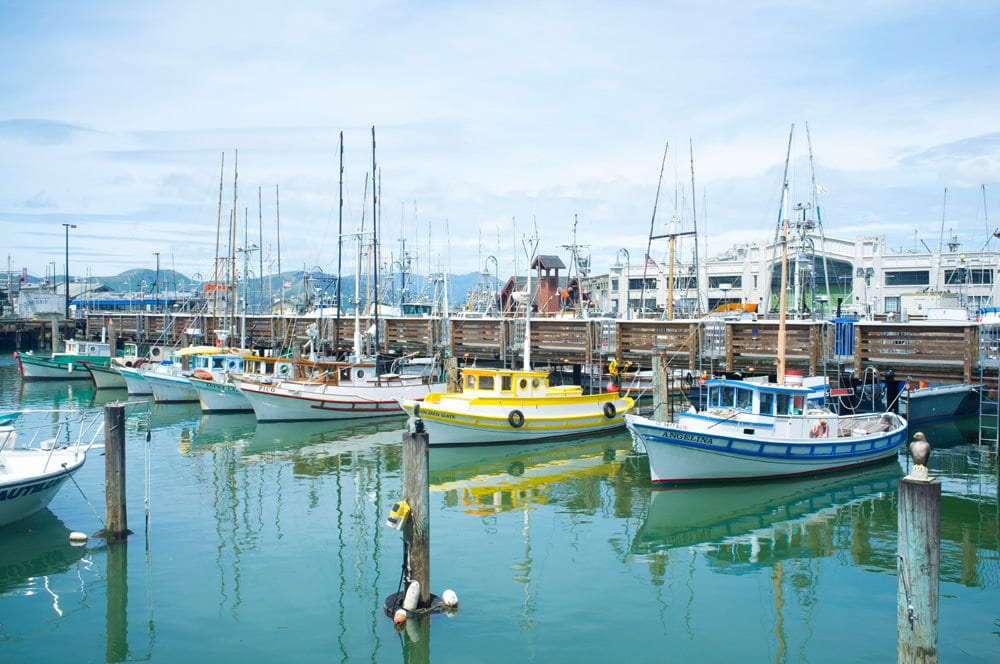
Fisherman’s Wharf is a neighborhood and popular tourist attraction in San Francisco, California. It roughly encompasses the northern harbor area of San Francisco from Ghirardelli Square or Van Ness Avenue east to Pier 35 or Kearny Street. The F Market streetcar line runs through the area, the Powell-Hyde Cable Car Line runs to Aquatic Park on the edge of Fisherman’s Wharf, and the Powell-Mason Cable Car Line runs a few blocks away.
Attractions and special features
Fisherman’s Wharf is one of the busiest and most famous tourist attractions in the western United States. Here you will find the
- Pier 39,
- the Cannery Shopping Center,
- the Ghirardelli Square,
- the Ripley’s Believe it or Not Museum,
- the Musée Mécanique, the wax museum at Fishermans Wharf
- and the San Francisco Maritime National Historical Park.
There are numerous seafood restaurants in the area, including the floating restaurant Forbes Island on Pier 39 and stalls serving fresh seafood. Some restaurants, including Fisherman’s Grotto, Pompeii’s Grotto and Alioto’s, have been in the same family for three generations. Other restaurants include chains such as Applebee’s and Bubba Gump Shrimp Co.
Other attractions in the Fisherman’s Wharf area include the Hyde Street Pier (part of the San Francisco Maritime National Historical Park), the USS Pampanito, a decommissioned World War II submarine, and the Balclutha, a 19th-century cargo ship. Near Pier 45 is a chapel commemorating the lost fishermen of San Francisco and Northern California.
There is a sea lion colony next to Pier 39. They had already settled here months before the Loma Prieta earthquake of 1989. The sea lions lie on wooden docks that were originally used for mooring boats.
Fisherman’s Wharf is also the site of numerous San Francisco events, including a Fourth of July fireworks display and some of the best views of the Fleet Week air shows featuring the Blue Angels. The USS Pampanito (SS-383) and the SS Jeremiah O’Brien are national historic landmarks preserved as memorials and museum ships as part of the San Francisco Maritime National Park Association at the Wharf.
Ad
17. Statue of Liberty (New York)
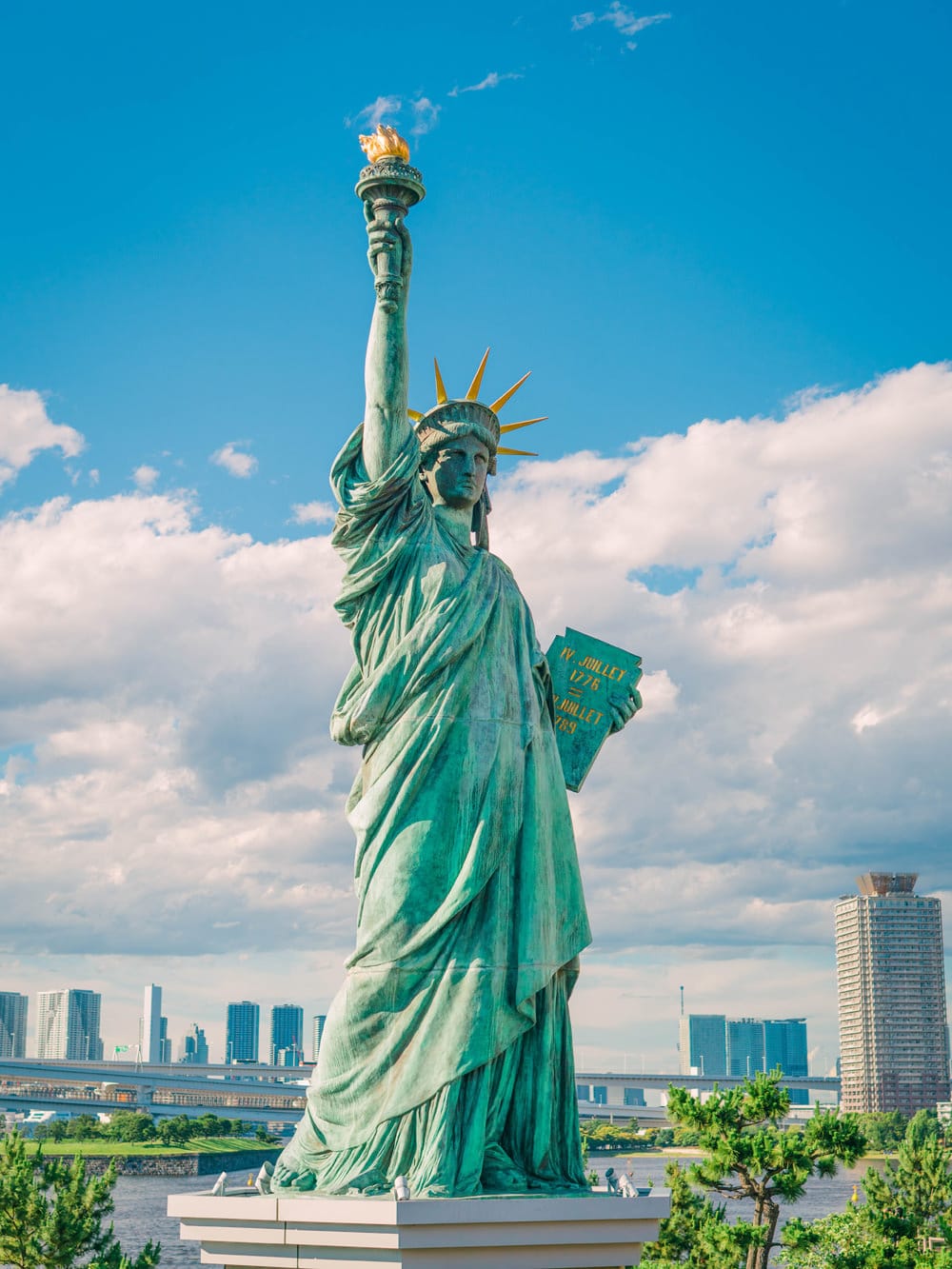
It is probably the most famous landmark of all in the USA — the Statue of Liberty. Also known as Liberty Enlightening the World or in French: La Liberté éclairant le monde, it is a colossal neoclassical sculpture on Liberty Island in New York Harbor in New York City. The copper statue, a gift from the people of France to the people of the United States, was designed by French sculptor Frédéric Auguste Bartholdi and the metal frame was built by Gustave Eiffel. The statue was inaugurated on October 28, 1886.
The statue depicts Libertas, a Roman goddess of freedom, in a robe. In her right hand she holds a torch above her head, in her left hand she carries a tabula ansata with the inscription JULI IV MDCCLXXVI (July 4, 1776, in Roman numerals), the date of the US Declaration of Independence. At her feet are a broken shackle and a chain, commemorating the recent abolition of slavery. After its inauguration, the statue became an icon of freedom and the United States, a symbol of welcome for immigrants arriving by sea.
Bartholdi was inspired by the French law professor and politician Édouard René de Laboulaye, who is said to have stated in 1865 that a monument to the independence of the USA should be a joint project of the French and American peoples. The Franco-Prussian War delayed progress until 1875, when Laboulaye proposed that the French should fund the statue and the US should provide the site and build the pedestal. Bartholdi completed the head and torch-bearing arm before the statue was fully designed, and these parts were displayed for publicity at international exhibitions.
The torch-bearing arm was exhibited at the Centennial in Philadelphia in 1876 and in Madison Square Park in Manhattan from 1876 to 1882. Fundraising proved difficult, mainly for the Americans, and by 1885 work on the pedestal was risking due to lack of funds. Publisher Joseph Pulitzer of the New York World launched an appeal for funds to complete the project and attracted more than 120,000 donors, most of whom gave less than a dollar. The statue was built in France, shipped overseas in crates and placed on the finished pedestal on what was then Bedloe’s Island. The completion of the statue was celebrated with the first parade in New York and a dedication ceremony presided over by President Grover Cleveland.
Until 1901, the statue was administered by the United States Lighthouse Board and then by the War Department; since 1933, it has been maintained by the National Park Service as part of the Statue of Liberty National Monument and is a major tourist attraction. Public access to the balcony around the torch has been prohibited since 1916.
Ad
18. Giant sequoias in Sequoia National Park
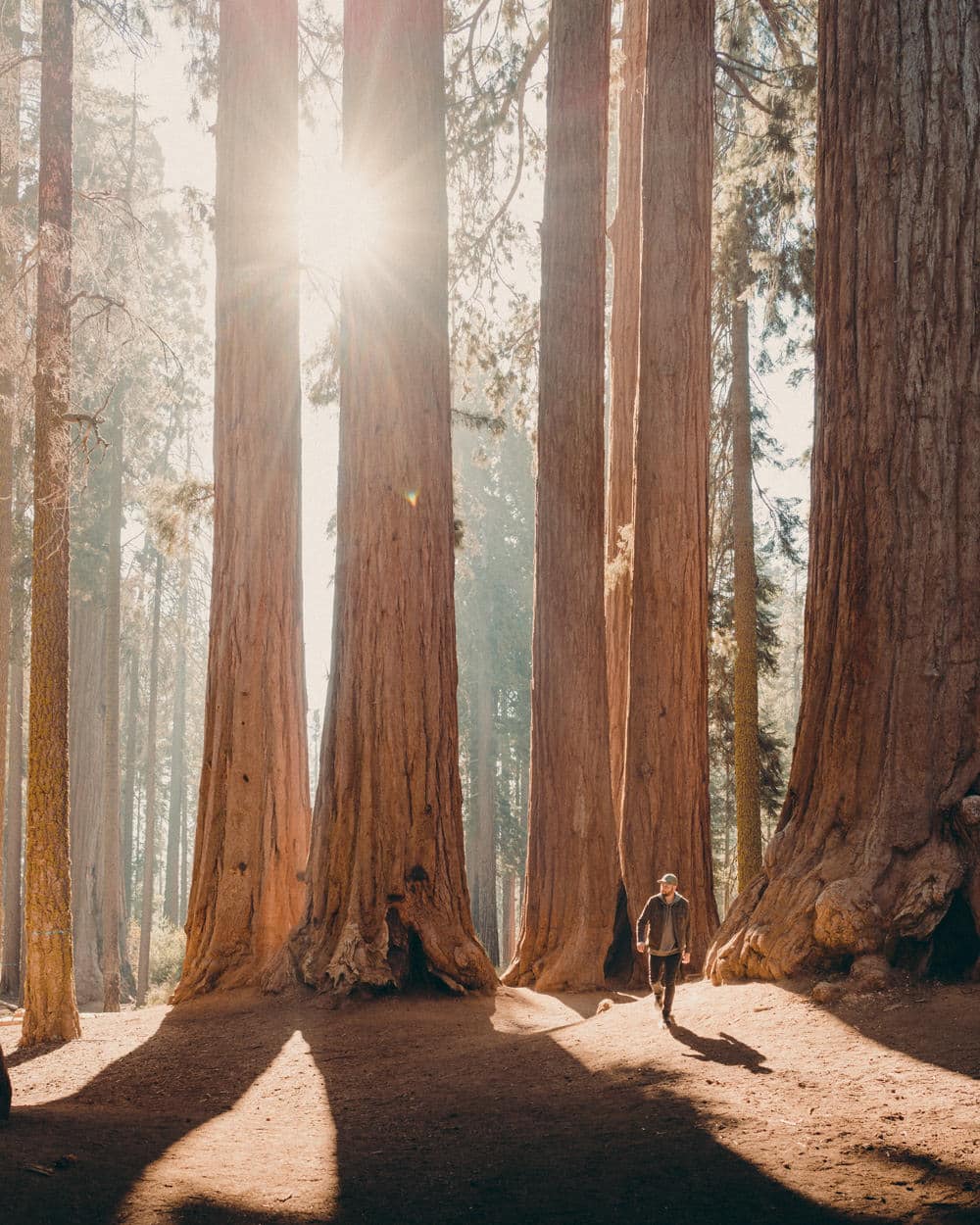
Sequoia National Park is located in the middle of California, a good 400 kilometers from San Francisco in the north and Los Angeles in the south. Yosemite National Park is around 200 kilometers away on a difficult route. Sequoia National Park is particularly worth a visit due to its tall and incredibly thick giant sequoia trees, and there are also several trails for pleasant hikes.
You can reach the park via the access road from Fresno in the north or Visalia in the south, all the roads are very winding and take considerably longer than you would expect from a glance at the map. To the north is the Grand Cove Visitor Center, to the south the Foothills Visitor Center at the park entrance. In the middle of the park, you will also reach the Lodgepole Visitor Center, located in a small “village”.
There is no ideal route for your visit. Coming from the north, you should first stop at Grant’s Grove, where you will encounter the first giant trees. Continue into the Giant Forest, where you will also find the famous General Sherman Tree, the largest known tree in the world.
Depending on the time and weather conditions, a visit to Crystal Cave, a cave that is well worth seeing but can only be visited on tours that take place three to five times a day, may be an option. Finally, you drive past Moro Rock in the south and back out of the park. Please note the current weather conditions in the park: due to the altitude, some roads can be difficult or even impossible to drive on in spring and fall.
Hiking in Sequoia National Park
Despite its great location, Sequoia is only suitable for hiking to a limited extent: In addition to the short and obligatory trail in the Giant Forest, there is the 6-kilometer Tokopah Falls Trail, which leads to a large waterfall. The Alta Peak Trail is also great, but as the name suggests, it involves a considerable climb and is a day trip.
Sequoia: Where to stay overnight?
There are several places to stay in Sequoia National Park itself, which are of course not cheap, but are often used due to a lack of alternatives. Outside the park, only Oakhurst, Visalia and Frenso are within a reasonably acceptable distance, without exception not nice towns with rather mediocre but not always cheap motels and hotels.
Campers have it easy here, as there are numerous campsites in the park that are rarely fully occupied. On the other hand, it is difficult to get to and from the park with a caravan.
Ad
19. Capitol (Washington D.C.)
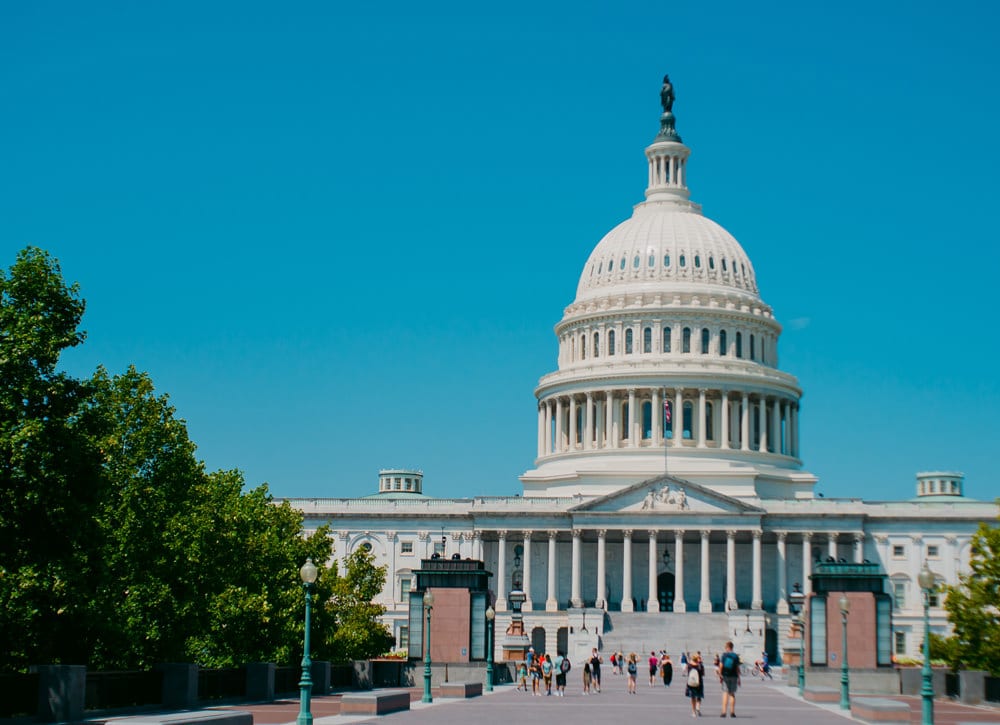
The United States Capitol, often called The Capitol or Capitol Building, is the seat of the United States Congress and the legislative branch of the US federal government. It is located on Capitol Hill at the eastern end of the National Mall in Washington, D.C.
Although it is no longer at the geographic center of the federal district, the Capitol is the starting point for the district’s street numbering system and the district’s four quadrants.
The original building was completed in 1800. It was partially destroyed in the Fire of Washington in 1814, but was completely rebuilt within five years. The building was later enlarged with a massive dome and expanded wings for the bicameral legislature — the House of Representatives in the south wing and the Senate in the north wing. Like the main buildings of the executive and judicial branches, the Capitol is built in the neoclassical style and has a white façade. Both the east and west façades are officially referred to as façades, although only the east façade was intended to receive visitors and dignitaries.
Terrain
The Capitol grounds cover approximately 1.11 km², with the actual grounds consisting mainly of lawns, sidewalks, roads, driveways and planting areas. Several monumental sculptures, including The Rescue and George Washington, once stood on the east facade and lawn of the Capitol. The current grounds were designed by noted American landscape architect Frederick Law Olmsted, who planned the expansion and landscaping from 1874 to 1892. As one of his first recommendations in 1875, Olmsted proposed the construction of the marble terraces that still exist today on the north, west and south sides of the building.
Olmsted also designed the Summerhouse, an open-air brick building located north of the Capitol. Three arches open into the hexagonal structure, which encloses a fountain and twenty-two brick chairs. A fourth wall contains a small window overlooking an artificial grotto. Built between 1879 and 1881, the summerhouse was intended to address the complaints of visitors to the Capitol about not having a place to sit and get water for their horses and themselves. Modern drinking fountains have since replaced Olmsted’s fountain for the latter purpose. Olmsted intended to build a second, equivalent summer house on the south side of the Capitol, but congressional objections led to the project being canceled.
Ad
20. Niagara Falls
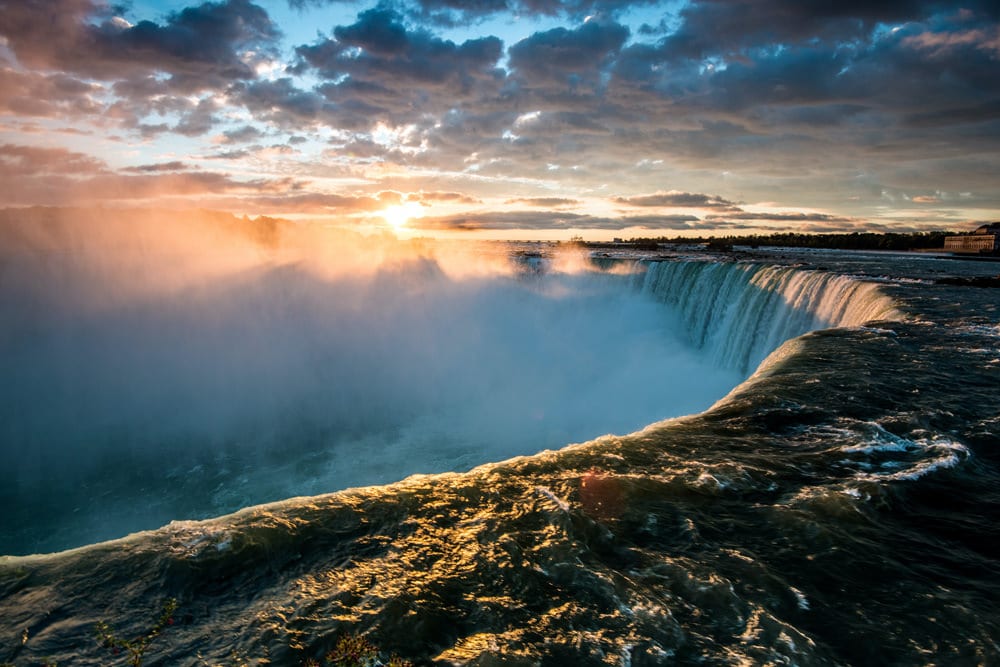
Niagara Falls is one of the most famous sights in the USA — even though it is only partly located in the United States! It is a group of three waterfalls at the southern end of the Niagara Gorge, straddling the border between the province of Ontario in Canada and the state of New York in the United States. The largest of the three waterfalls is Horseshoe Falls, also known as Canadian Falls, which straddles the border between the two countries. The smaller American Falls and Bridal Veil Falls are located in the United States. Bridal Veil Falls is separated from Horseshoe Falls by Goat Island and from American Falls by Luna Island, both of which are in New York.
The Niagara River, which drains Lake Erie into Lake Ontario, forms the largest waterfalls in North America with a drop of more than 50 meters. During peak tourist times of the day, more than 168,000 cubic meters of water flow over the crest of the falls every minute. The Horseshoe Falls are the most powerful waterfall in North America in terms of flow rate. Niagara Falls is well-known for its beauty and is a valuable source of hydroelectric power. Since the 19th century, it has been a challenge for the Falls’ managers to strike a balance between recreational, commercial and industrial use.
Niagara Falls is located 27 km north-northwest of Buffalo, New York, and 69 km south-southeast of Toronto, between the twin cities of Niagara Falls, Ontario, and Niagara Falls, New York. Niagara Falls was formed when the glaciers receded at the end of the Wisconsin glaciation (the last ice age) and the water from the newly formed Great Lakes made its way over and through the Niagara Escarpment on its way to the Atlantic Ocean.
Tourism
Most visitors come in summer, when Niagara Falls* is an attraction both during the day and in the evening. From the Canadian side, both sides of the falls are floodlit for several hours after dark (until midnight). In 2007, the number of visitors exceeded 20 million for the first time; today, the number of annual tourists sometimes exceeds 30 million.
The oldest and most famous tourist attraction at Niagara Falls is the boat trip on the Maid of the Mist, named after an ancient mythical figure of the Ongiara Indians, which has been carrying passengers into the rapids immediately below the falls since 1846. Cruise ships operate from piers on both sides of the falls, with the Maid of the Mist operating from the American side and Hornblower Cruises operating from the Canadian side until 2014.
From the American side, the American Falls can be viewed from walking paths along Prospect Point Park, where the Prospect Point Observation Tower and a boat dock for the Maid of the Mist are also located. Goat Island offers more views of the falls and is accessible to foot and car traffic via a bridge above the American Falls. From Goat Island, the Cave of the Winds is accessible by elevator and takes hikers to a point below Bridal Veil Falls. Also on Goat Island are the Three Sisters Islands, the Power Portal, which features a statue of Nikola Tesla (the inventor whose patents for the AC induction motor and other AC transmission devices made the use of the falls possible), and a hiking trail that provides views of the rapids, the Niagara River, the gorge and all the falls. Most of these attractions are located within Niagara Falls State Park.
The Niagara Scenic Trolley offers guided tours along the American Falls and around Goat Island. Panoramic and aerial views of the Falls can also be viewed by helicopter. The Niagara Gorge Discovery Center showcases the natural and local history of Niagara Falls and the Niagara Gorge. In Niagara Falls, New York, a casino and luxury hotel was opened by the Seneca Indian tribe. The Seneca Niagara Casino & Hotel is located in the former Niagara Falls Convention Center. The new hotel is the first addition to the city’s skyline since the United Office Building was completed in the 1920s.
On the Canadian side, Queen Victoria Park offers manicured gardens, platforms overlooking the American, Bridal Veil and Horseshoe Falls, and underground passageways leading to observation rooms that give the illusion of being in the midst of the falling waters. Along the Niagara River, the Niagara River Recreational Trail runs for 56 km from Fort Erie to Fort George and includes many historic sites from the War of 1812.
Ad
Note: Links marked with an asterisk (*) or “Ad” are so-called affiliate links. As an Amazon partner, we earn from qualified sales. The same applies to other partners. This means that we receive a small commission on purchases or bookings to finance this site. There are no additional costs for you!




